This post may contain affiliate links. Please read our disclosure policy.
Make your own almond butter! All you need are nuts and a food processor. It is easy and can be very cost-effective especially if you are in the habit of picking up premium nut butter for $12 a pop. Plus, when you DIY, you customize the chunkiness level and pick your own add-ins like cinnamon, honey, or both!
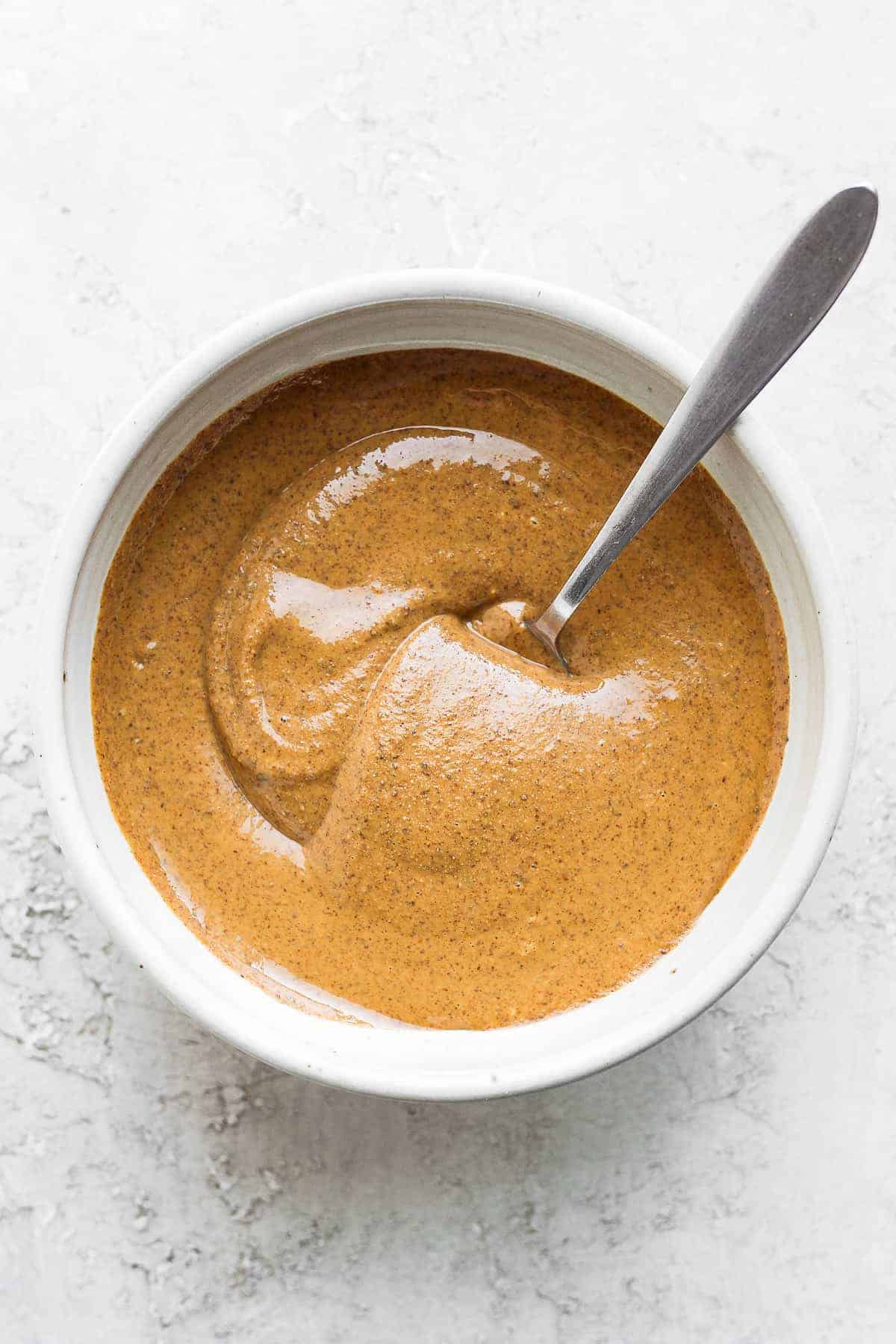
Almonds are very nutritious. Of course, they are high in fat, but it is monounsaturated fat, aka, the good kind that helps lower bad cholesterol. A tablespoon of almond butter can add protein, fiber, and iron to your diet.
Ingredients to make almond butter
- Almonds: First, for the purest product, start with raw, unsalted almonds. That way, you control the salt and oil in your almond butter. Commercially roasted often contain oil. Also, pre-salted nuts have the potential of leaving you with an over salted final product. You can always add salt but you cannot subtract it.
- Salt: Whatever salt you prefer to use in your kitchen, and you can control the amount. Try the recommended amount in the recipe below and adjust to your taste.
- Optional Add-Ins: If you want to sweeten things up, honey, agave syrup, and maple syrup are all natural additions. Spice-wise, try pairing the almonds with cardamon, cinnamon, pumpkin spice, or even hot pepper flakes for a savory mix. Finally, chia seeds, flaxseeds or a handful of other kinds of nuts are also tasty additions.
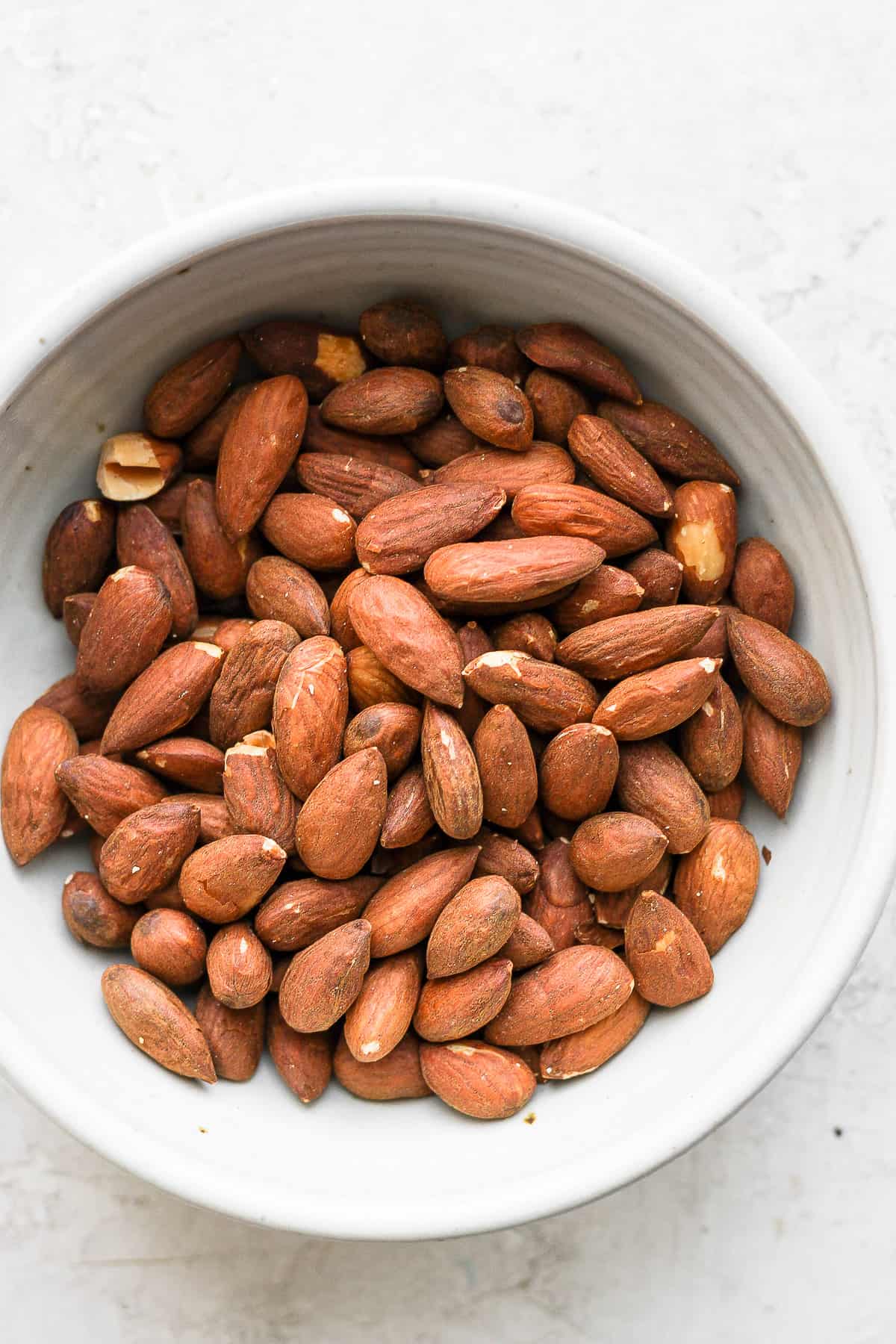
How to make homemade almond butter
- Place the almonds on a baking sheet and toast in the oven, turning halfway through.
- If you are starting with roasted nuts, it’s still a great idea to toast the nuts just for a few minutes to warm them up. Heating releases their oils which makes for better blending.
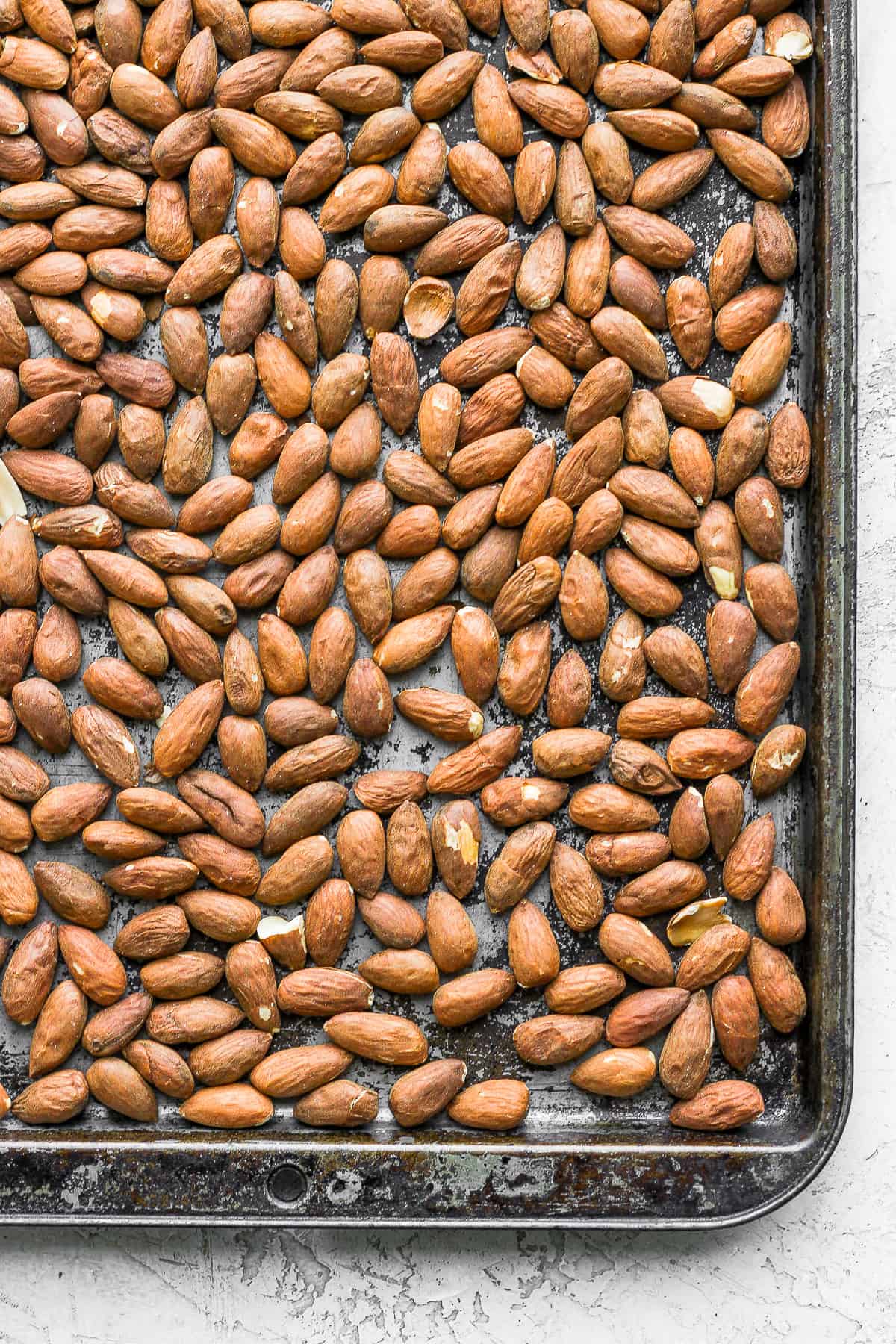
- Allow let the almonds cool a bit but not too much. (They blend better warm but you never want to put HOT food in a food processor. ) And transfer into a food processor along with the salt.
- Next, blend until the nuts break down and start to form a paste.
- Keep blending until the mixture becomes smooth and creamy.
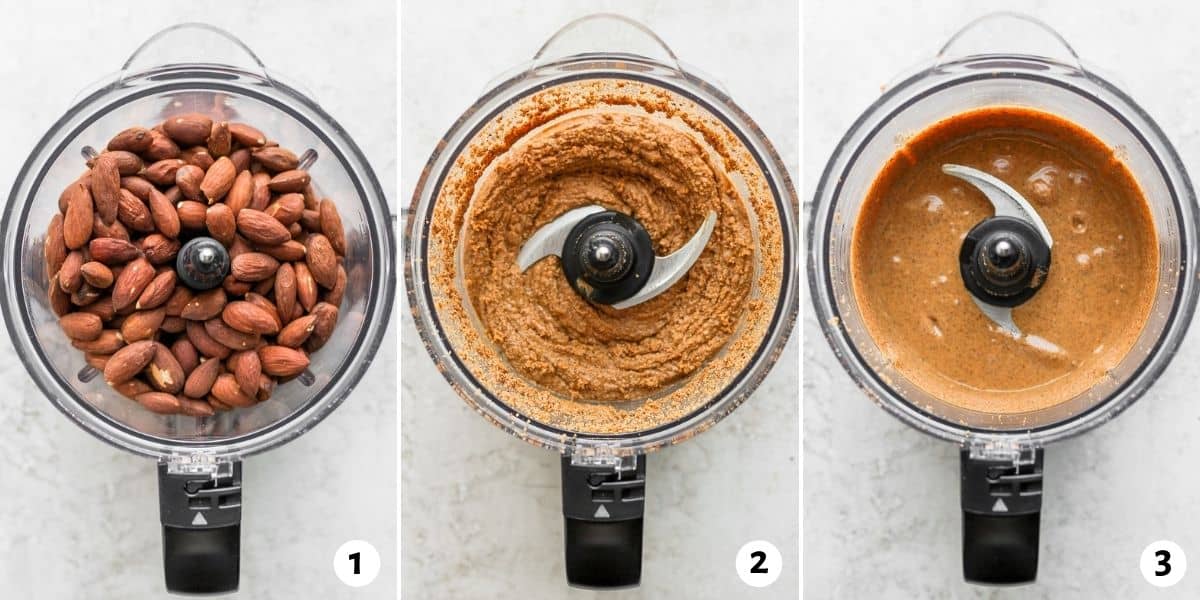
Tips for making homemade almond butter
- Use the freshest nuts. Most importantly, consider your foundation. Because the freshest nuts make the best nut butter. Also, the resulting almond butter will have a longer shelf life.
- Keep watch on the nuts in the oven. Toasted nuts are yummy but burnt nuts taste acrid. And nuts burn easily! So, the moment you start smelling that toasty nut smell from the oven, remove immediately and slide the hot nuts off the pan and onto a cool surface to cool slightly before processing.
- Be super patient. Achieving creaminess really takes a while, even in the best food processor. It could take up to 10 minutes to get the right consistency.
- Use this two-step method if you love chunky nut butter. First, set aside a scoop of the ground-up almonds when they are at that granular wet-sand stage. At the end of processing, mix in the set-aside.
- Add your own oil. For ultimate spreadability, add a bit of a neutral oil – like peanut or canola – during your final bit of processing. Start with a very small amount, about one teaspoon.
Recipes that use Almond Butter
- Flourless Almond Butter Chocolate Chip Cookies
- Honey & Cinnamon Spiced Almond Cake
- Spicy Almond Butter Noodles
- Almond Butter Sandwich
- Almond Butter, Strawberry & Banana Overnight Oats
- Baked Apple Donuts with Almond Butter Glaze
- Spicy Almond Butter Chicken Curry
- Almond Butter & Jam Cupcakes
- Blueberry Almond Butter Smoothie
- Fudgy Flourless Almond Butter Brownies
Frequently asked questions
For long storage, yes. And it will last in the refrigerator for up to six month. If you prefer warm almond butter and go through it quickly, you can store it in the pantry. For ultimate safety, always refrigerate.
Yes. It will never hard freeze because of its high fat content, but for smoothies, it is great right from the freezer. Expect it to last up to a year if stored in an airtight container.
According to Healthline, while roasting nuts can potentially negatively alter the structure of their healthy fats, roasting at a low temperature (as recommended) minimizes this damage. And, roasting improves the flavor.
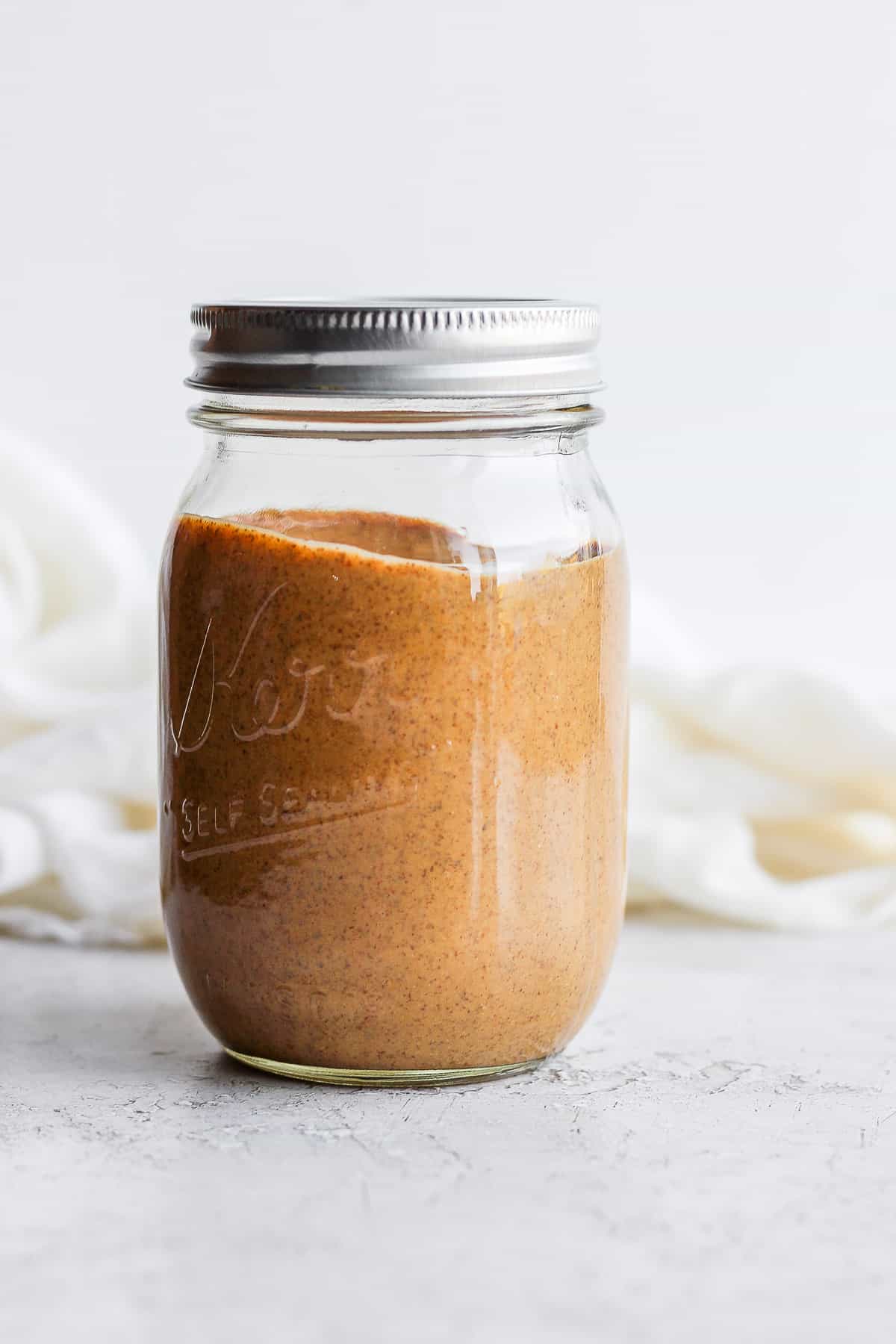
Healthy, homemade almond butter is such a great pantry staple for lunches, smoothies and quick snacking. This tutorial shows you how easy it is to prepare it yourself!
For more cooking resources, check out:
- How to Make Oatmeal
- How to Make Peanut Butter
- How To Make Oat Flour
- How to Make a Flax Egg
- How to Poach an Egg Perfectly
- How to Cut an Avocado
- How to Cook Dry Chickpeas
- How to Cut a Head of Lettuce
- How to Cut Cauliflower into Florets
If you’ve found this cooking resource for How to Make Almond Butter helpful or if you’ve tried any recipe on FeelGoodFoodie, then don’t forget to rate the recipe and leave me a comment below! I would love to hear about your experience with this technique. And if you snapped some shots of it, share it with me on Instagram so I can repost on my stories!
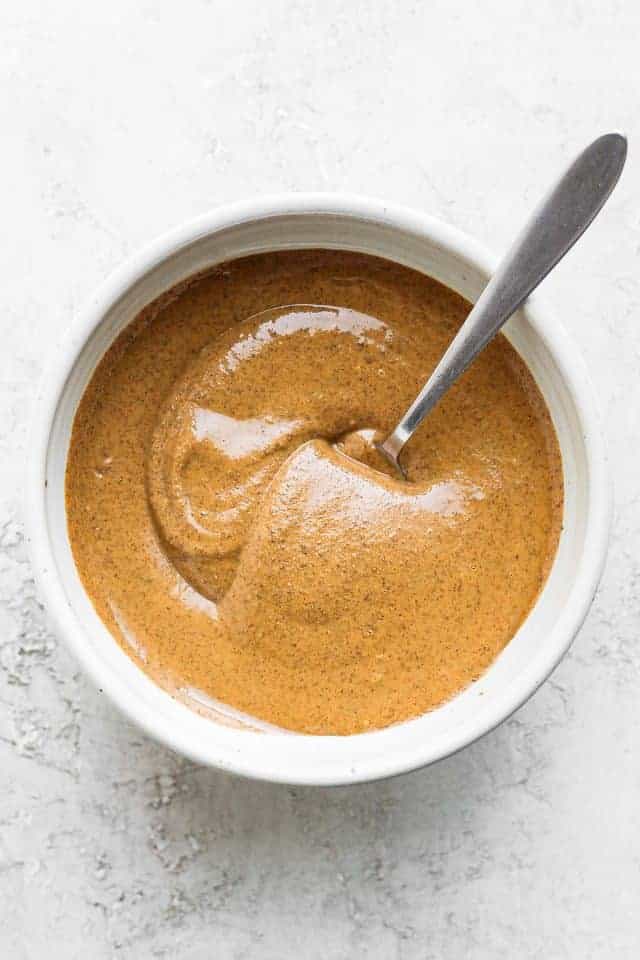
How to Make Almond Butter
Ingredients
- 3 cups whole almonds skin on
- ¼ teaspoon salt
Instructions
- Preheat oven to 275°F. Place the almonds on a baking sheet and toast for 20-25 minutes, turning halfway through.
- Transfer the warm almonds from the baking sheet into a food processor fitted with the metal blade along with the salt.
- Blend until a smooth homogeneous paste forms, stopping to scrape down the sides as needed. It could take up to 10 minutes depending on your food processor.
Notes
Nutrition
Nutrition information provided is an estimate. It will vary based on cooking method and specific ingredients used.
Photo Credit: Erin Jensen
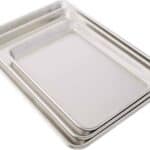
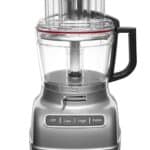
I definitely will do the almond butter, sounds easy and no preservatives, bonus.
Yes! Let me know what you think once you do!